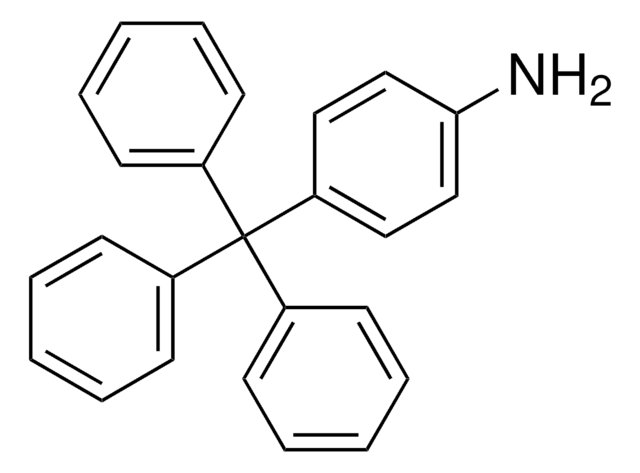462268
4,4′-Diamino-2,2′-stilbenedisulfonic acid
technical grade, 85%
Sinónimos:
Amsonic acid
About This Item
grado
technical grade
Análisis
85%
mp
>300 °C (lit.)
cadena SMILES
Nc1ccc(\C=C\c2ccc(N)cc2S(O)(=O)=O)c(c1)S(O)(=O)=O
InChI
1S/C14H14N2O6S2/c15-11-5-3-9(13(7-11)23(17,18)19)1-2-10-4-6-12(16)8-14(10)24(20,21)22/h1-8H,15-16H2,(H,17,18,19)(H,20,21,22)/b2-1+
Clave InChI
REJHVSOVQBJEBF-OWOJBTEDSA-N
Categorías relacionadas
Descripción general
Palabra de señalización
Warning
Frases de peligro
Clasificaciones de peligro
Acute Tox. 4 Oral
Código de clase de almacenamiento
8A - Combustible corrosive hazardous materials
Clase de riesgo para el agua (WGK)
WGK 1
Punto de inflamabilidad (°F)
Not applicable
Punto de inflamabilidad (°C)
Not applicable
Equipo de protección personal
dust mask type N95 (US), Eyeshields, Gloves
Certificados de análisis (COA)
Busque Certificados de análisis (COA) introduciendo el número de lote del producto. Los números de lote se encuentran en la etiqueta del producto después de las palabras «Lot» o «Batch»
¿Ya tiene este producto?
Encuentre la documentación para los productos que ha comprado recientemente en la Biblioteca de documentos.
Los clientes también vieron
Nuestro equipo de científicos tiene experiencia en todas las áreas de investigación: Ciencias de la vida, Ciencia de los materiales, Síntesis química, Cromatografía, Analítica y muchas otras.
Póngase en contacto con el Servicio técnico
